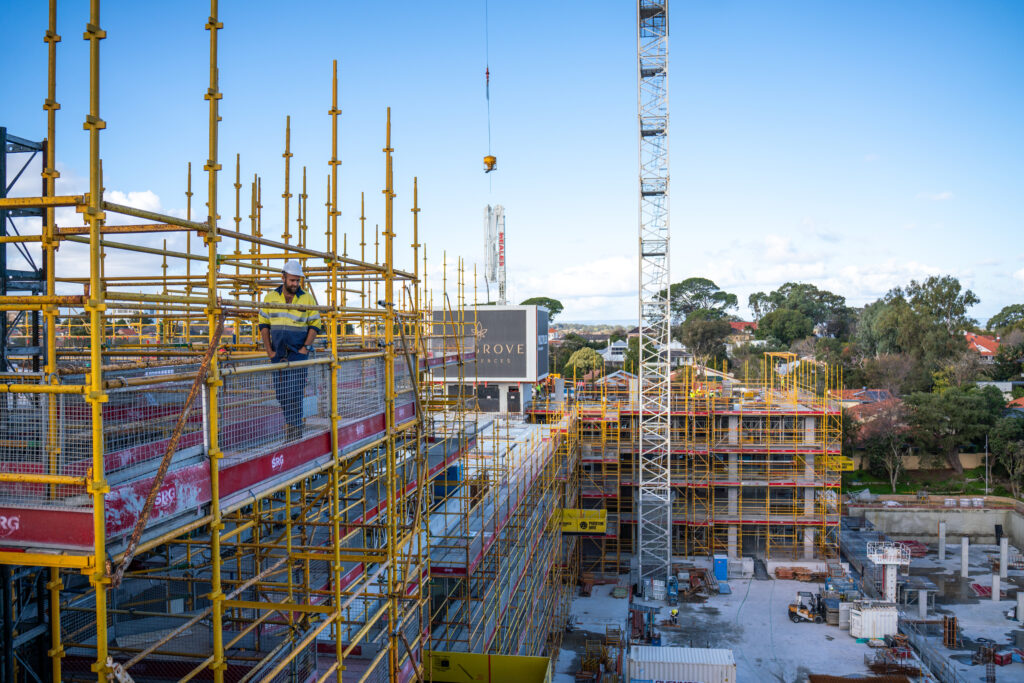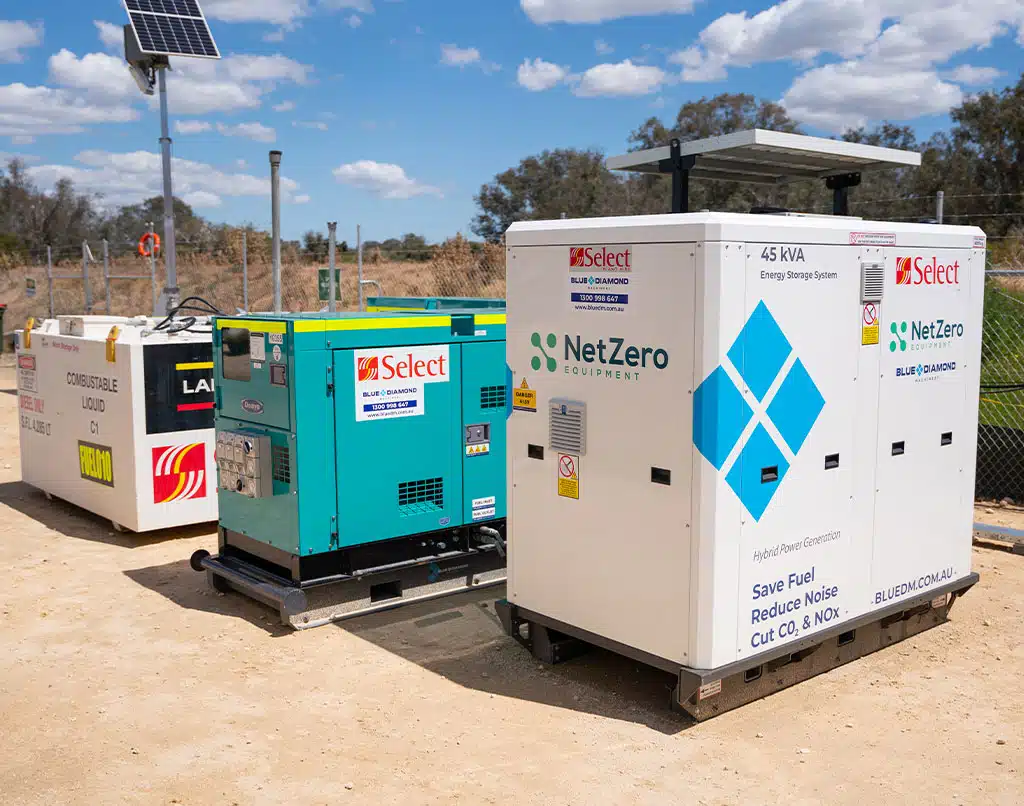Think about your average construction site: equipment everywhere, contractors drilling, clearing debris, dust circulating, generators roaring away – there’s a lot going on. It’s hot, dusty, and loud.
Until now, this has not only been the norm, it’s been the standard.
Battery energy storage systems (ESS) provide a much-desired alternative. There’s now more demand than ever to source reliable energy with a caveat of mindful, environmentally friendly energy sources.
Here’s why battery energy storage systems (BESS) are set to become a staple for power generation on construction sites over the next decade.
Why Are Construction Sites Transitioning Away From Diesel Generators?

The construction and mining industries are the largest market sectors for diesel power generation. Why? because it’s easy – and it’s literally a phone call away. Whatever you need can be delivered and all you need to do is start them up for immediate power.
For decades, diesel generators have been the saving grace of fast access to power without a grid connection, albeit at the expense of its harmful emissions. Even with advanced Tier 4 generators and restrictive emission standards, a diesel exhaust can still emit dozens of air contaminants.
This is why there’s demand for the alternative – because while diesel generators are cheap and easy, they’re also an ongoing problem. Here’s why:
Diesel Generators Aren't Always Suited to the Electrical Load
Say a company requires an office complex to be sent out for a road works program. The procurement department has no idea what the electrical load will be so they’ll usually make an assumption of the load they require. Let’s say they assign a 50kVA generator to the office complex, organise its delivery and wire it in. More often than not, this information will continually be passed on. Due diligence tends to go out the window – if they used a 50kVA generator last time, they’ll send for it again.
Now, once the generator is on-site, it’s not uncommon for a generator to operate at a low load constantly. This invites issues like glazing which often causes the generator to fail and risks the safety of workers. Each time a piece of equipment fails, it’s an unplanned added expense.
Batteries don’t have this problem, even if the unit is larger than what’s required, there won’t likely be any issue with its operation, even at low load draws.
Maintenance, Refuelling & Servicing of Diesel Generators Disrupts Power Supply
Generators require regular servicing, maintenance and repair, not to mention refueling.
Best practice requires the generator to be taken offline during these procedures. Users may need to implement priority loading or take it offline completely. It also means additional manpower to visit the site, shut down the generator, complete the task, and re-wire it in.
This is disruptive and can chew into deadlines.
Labour forces can’t be stood down just because the generators are offline or waiting to be fixed, so there’s extra cash being paid out into unproductive site labour.
Units like the AMPD Enertainer harness the technology to allow for remote servicing and maintenance. Technicians are able to regularly monitor its performance, perform firmware updates and troubleshoot potential problems without the need to visit the site or interrupt its operation.
Diesel Generators Produce Carbon Emissions...
This is the big one. Although there are restrictions on emission output with diesel generators (Tier 4 being the current and most restrictive standards), it’s still a problem.
Battery energy storage systems solve fuel logistics, noise pollution, maintenance and servicing restrictions, and even worksite productivity.
But above all, the battery doesn’t emit carbon, resulting in an 85% average reduction of carbon emissions.
For example, 1L of petrol will produce roughly 2.3kg of carbon dioxide and 1L of diesel will produce about 2.7kg of carbon dioxide. So, if you save 10,000L of diesel per year, that’s up to 27 tonnes of CO2.
Is Hybrid Technology the Solution?

While diesel has its pitfalls, it doesn’t look like it’s going to be phased out of the construction industry anytime soon. But, there is a demand for lithium battery technology for backup power to replace diesel.
There is still competition from diesel generators, many entities are combining diesel and hybrid and energy storage solutions to meet sustainability targets and shave fuel expenditure.
Although Battery energy storage systems may have a hefty price tag, the overall ROI allows users to make back initial costs within two to five years.
Better yet, an Battery energy storage system allows users to utilise smaller diesel generator models. This saves money on the unit, extends the lifetime of the generator, optimises performance, eliminates noise and air pollution while heavily reducing carbon emissions as a result.
What About Tier 4 Generators?
Since the 1990s, governments have been strategising how to monitor and reduce emission output as a way to increase overall air quality on construction and mining sites. Diesel generators are still an essential cog in the machine on many construction sites, but with an effort to seek more eco-friendly power solutions, generator tier-ratings are now more restrictive than ever.
Tier 4 generators have the strictest regulations to date when it comes to emission output, requiring state-of-the-art technologies that reduce the output of particulate matter (PM), non-methane hydrocarbons (NMHC) and Nitrogen Oxide (NOx) by up to 90%.
Tier 4 generators are more economical generators for the market, specifically Denyo generators. This is largely because many construction worksites having their hands tied when it comes to budget, necessity of net zero power sources. That said, diesel generators are not leaving the power generation market anytime soon, but it’s clear that Tier 4 generators are a good example of the proactivity to begin reducing your carbon footprint.
Pave the Way for Smarter Construction. Get in Touch Today.
With years of industry experience, Blue Diamond Machinery is heavily investing in smarter alternative power solutions for construction and mining industries. Take the first steps to reduce your onsite emissions without compromising on productivity or reliability. Blue Diamond is ready to support your energy transition and help the construction and mining industry integrate into new technologies for a smarter operation. Get in touch with the team today.

